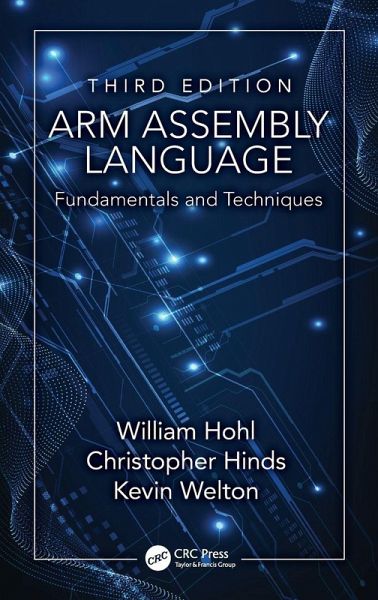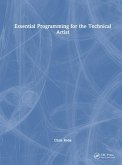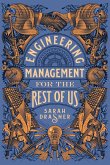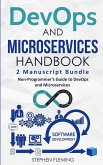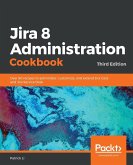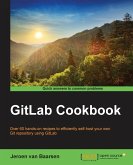Christopher Hinds, Kevin Patrick Welton, William Adam Hohl
ARM Assembly Language
Fundamentals and Techniques
Christopher Hinds, Kevin Patrick Welton, William Adam Hohl
ARM Assembly Language
Fundamentals and Techniques
- Gebundenes Buch
- Merkliste
- Auf die Merkliste
- Bewerten Bewerten
- Teilen
- Produkt teilen
- Produkterinnerung
- Produkterinnerung
ARM Assembly Language: Fundamentals and Techniques, Third Edition explains in clear terms how Arm processors are programmed at the most fundamental level. It moves entirely into the Cortex-M space, using the Arm v8-M instruction set to illustrate how assembly code for the most modern Arm processors is written.
Andere Kunden interessierten sich auch für
![Essential Programming for the Technical Artist Essential Programming for the Technical Artist]() Chris RodaEssential Programming for the Technical Artist180,99 €
Chris RodaEssential Programming for the Technical Artist180,99 €![Ruby Ruby]() Sufyan bin UzayrRuby160,99 €
Sufyan bin UzayrRuby160,99 €![Engineering Management for the Rest of Us Engineering Management for the Rest of Us]() Sarah DrasnerEngineering Management for the Rest of Us17,99 €
Sarah DrasnerEngineering Management for the Rest of Us17,99 €![DevOps And Microservices Handbook DevOps And Microservices Handbook]() Stephen FlemingDevOps And Microservices Handbook20,99 €
Stephen FlemingDevOps And Microservices Handbook20,99 €![Jira 8 Administration Cookbook Jira 8 Administration Cookbook]() Patrick LiJira 8 Administration Cookbook36,99 €
Patrick LiJira 8 Administration Cookbook36,99 €![20 GOTO 10 20 GOTO 10]() Steven Goodwin20 GOTO 1020,99 €
Steven Goodwin20 GOTO 1020,99 €![GitLab Cookbook GitLab Cookbook]() Jeroen van BaarsenGitLab Cookbook35,99 €
Jeroen van BaarsenGitLab Cookbook35,99 €-
-
-
ARM Assembly Language: Fundamentals and Techniques, Third Edition explains in clear terms how Arm processors are programmed at the most fundamental level. It moves entirely into the Cortex-M space, using the Arm v8-M instruction set to illustrate how assembly code for the most modern Arm processors is written.
Hinweis: Dieser Artikel kann nur an eine deutsche Lieferadresse ausgeliefert werden.
Hinweis: Dieser Artikel kann nur an eine deutsche Lieferadresse ausgeliefert werden.
Produktdetails
- Produktdetails
- Verlag: Taylor & Francis Ltd
- 3. Auflage
- Seitenzahl: 368
- Erscheinungstermin: 5. August 2025
- Englisch
- Abmessung: 234mm x 156mm
- Gewicht: 453g
- ISBN-13: 9781032951812
- ISBN-10: 1032951818
- Artikelnr.: 73390361
- Herstellerkennzeichnung
- Libri GmbH
- Europaallee 1
- 36244 Bad Hersfeld
- gpsr@libri.de
- Verlag: Taylor & Francis Ltd
- 3. Auflage
- Seitenzahl: 368
- Erscheinungstermin: 5. August 2025
- Englisch
- Abmessung: 234mm x 156mm
- Gewicht: 453g
- ISBN-13: 9781032951812
- ISBN-10: 1032951818
- Artikelnr.: 73390361
- Herstellerkennzeichnung
- Libri GmbH
- Europaallee 1
- 36244 Bad Hersfeld
- gpsr@libri.de
William Hohl has held the position of Program Manager at Intel for 9 years, responsible for creating technical documentation used by various SoC teams. Throughout his 35-year career, Mr. Hohl has also been with Texas Instruments, Arm, and Motorola, working in validation, design, applications, support, and management roles. At Arm, he held the position of Worldwide University Relations Manager for 10 years, traveling through 35 countries. In addition to his engineering duties, he also held an adjunct faculty position in Austin from 1998 to 2004, teaching undergraduate mathematics. He holds MSEE and BSEE degrees from Texas A&M University as well as six patents in the field of debug architectures. Mr. Hohl now works full-time from his ranch outside of Cameron, Texas. Chris Hinds worked in the microprocessor field for over 35 years, designing floating-point processors and participating in the development of the IEEE 754-2008 specification. He held positions at Motorola, AMD, and recently retired from Arm. Prior to a career in industry, Mr. Hinds was on the faculty of Oral Roberts University in Tulsa, teaching courses in Electronics, Digital Logic, and Microprocessors. While at Arm, he was the primary author of the ARM VFP floating-point architecture and led the design of the first of the Arm processors implementing IEEE-754-compliant floating-point. His final time in Arm was as a Distinguished Engineer and Director of Patent Engineering in the Arm Legal group. Mr. Hinds is a named inventor on over 60 U.S. patents and over 100 worldwide patents. He holds BSEE and MSEE degrees from Texas A&M University and a Master of Divinity from Oral Roberts University. He is the author of numerous published papers and presentations on the floating-point architecture of Arm processors. He currently occupies his time preparing to teach a class in his local church, and traveling with his wife of 30 years. Kevin Welton has worked with Arm processors since 1988, when he joined Acorn to work on a port of the 4.3 BSD kernel to their ARM2-based desktop. He was invited to move to Arm in 1995, and has been there ever since. In his time at Arm, he has worked in a variety of software roles across the company, including leading the development of a software emulator, writing the first ports of SMP Linux to the Arm architecture, and working on early investigations into Arm's big.LITTLE heterogeneous computing architecture. As one of the most experienced trainers in Arm, Mr. Welton has presented hundreds of training courses around the world, covering their full range of processor offerings and architecture variants from the 1990s to the present. He has a BSc degree from the University of London, and holds a patent in the field of multi-processor power management.
Chapter 1 An Overview of Computing Systems Chapter 2 The Programmer's Model
Chapter 3 Introduction to Instruction Sets: v4T and v7-M Chapter 4
Assembler Rules and Directives Chapter 5 Loads, Stores, and Addressing
Chapter 6 Constants and Literal Pools Chapter 7 Integer Logic and
Arithmetic Chapter 8 Branches and Loops Chapter 9 Introduction to
Floating-Point: Basics, Data Types, and Data Transfer Chapter 10
Introduction to Floating-Point: Rounding and Exceptions Chapter 11
Floating-Point Data-Processing Instructions Chapter 12 Tables Chapter 13
Subroutines and Stacks Chapter 14 Exception Handling: ARM7TDMI Chapter 15
Memory-Mapped Peripherals Chapter 16 Mixing C and Assembly Chapter 17:
Armv8-M Additional Features Appendix A: Running Keil Tools Appendix B:
ASCII Character Codes
Chapter 3 Introduction to Instruction Sets: v4T and v7-M Chapter 4
Assembler Rules and Directives Chapter 5 Loads, Stores, and Addressing
Chapter 6 Constants and Literal Pools Chapter 7 Integer Logic and
Arithmetic Chapter 8 Branches and Loops Chapter 9 Introduction to
Floating-Point: Basics, Data Types, and Data Transfer Chapter 10
Introduction to Floating-Point: Rounding and Exceptions Chapter 11
Floating-Point Data-Processing Instructions Chapter 12 Tables Chapter 13
Subroutines and Stacks Chapter 14 Exception Handling: ARM7TDMI Chapter 15
Memory-Mapped Peripherals Chapter 16 Mixing C and Assembly Chapter 17:
Armv8-M Additional Features Appendix A: Running Keil Tools Appendix B:
ASCII Character Codes
Chapter 1 An Overview of Computing Systems Chapter 2 The Programmer's Model
Chapter 3 Introduction to Instruction Sets: v4T and v7-M Chapter 4
Assembler Rules and Directives Chapter 5 Loads, Stores, and Addressing
Chapter 6 Constants and Literal Pools Chapter 7 Integer Logic and
Arithmetic Chapter 8 Branches and Loops Chapter 9 Introduction to
Floating-Point: Basics, Data Types, and Data Transfer Chapter 10
Introduction to Floating-Point: Rounding and Exceptions Chapter 11
Floating-Point Data-Processing Instructions Chapter 12 Tables Chapter 13
Subroutines and Stacks Chapter 14 Exception Handling: ARM7TDMI Chapter 15
Memory-Mapped Peripherals Chapter 16 Mixing C and Assembly Chapter 17:
Armv8-M Additional Features Appendix A: Running Keil Tools Appendix B:
ASCII Character Codes
Chapter 3 Introduction to Instruction Sets: v4T and v7-M Chapter 4
Assembler Rules and Directives Chapter 5 Loads, Stores, and Addressing
Chapter 6 Constants and Literal Pools Chapter 7 Integer Logic and
Arithmetic Chapter 8 Branches and Loops Chapter 9 Introduction to
Floating-Point: Basics, Data Types, and Data Transfer Chapter 10
Introduction to Floating-Point: Rounding and Exceptions Chapter 11
Floating-Point Data-Processing Instructions Chapter 12 Tables Chapter 13
Subroutines and Stacks Chapter 14 Exception Handling: ARM7TDMI Chapter 15
Memory-Mapped Peripherals Chapter 16 Mixing C and Assembly Chapter 17:
Armv8-M Additional Features Appendix A: Running Keil Tools Appendix B:
ASCII Character Codes

